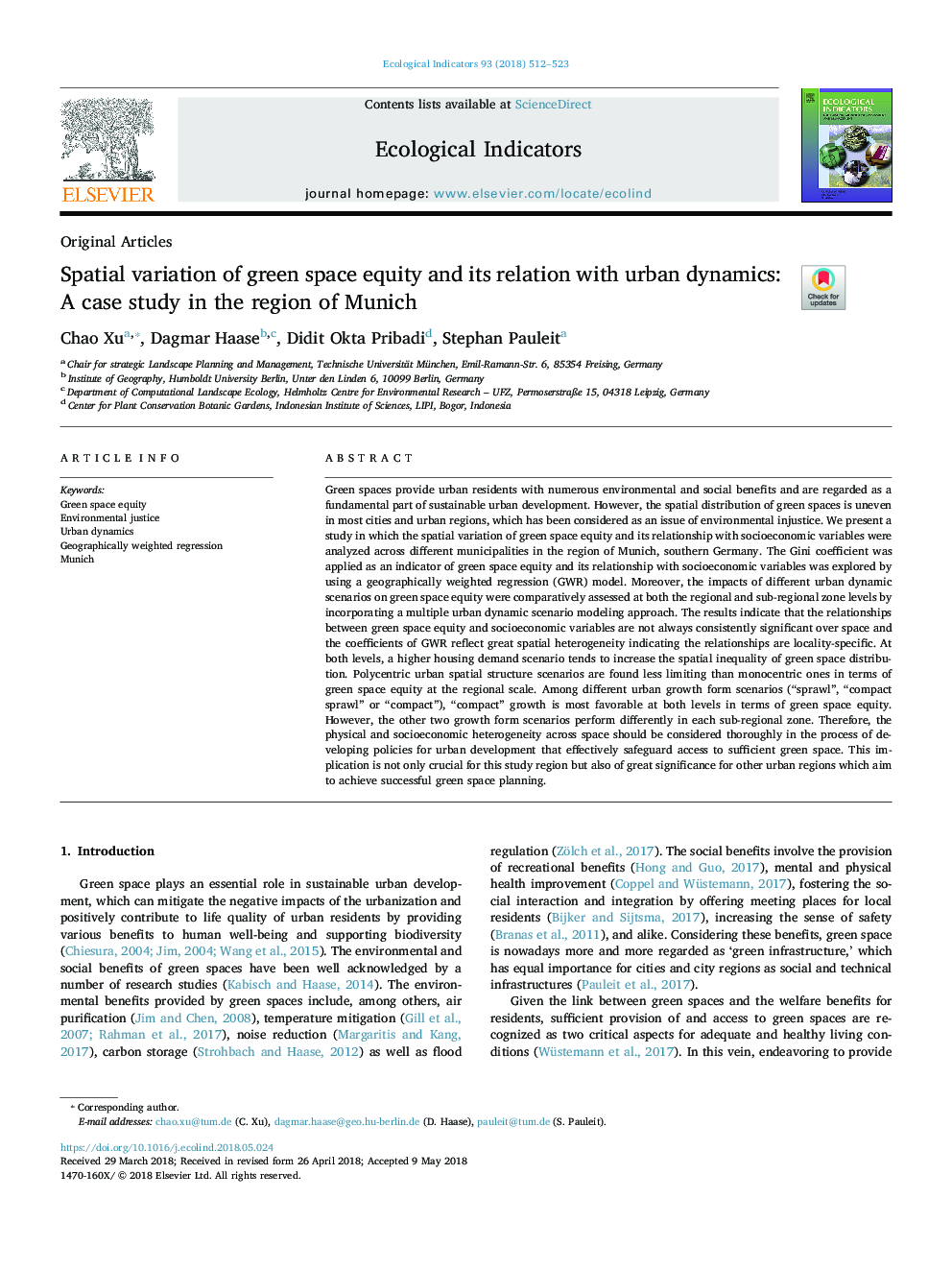| کد مقاله | کد نشریه | سال انتشار | مقاله انگلیسی | نسخه تمام متن |
|---|---|---|---|---|
| 8845170 | 1617109 | 2018 | 12 صفحه PDF | دانلود رایگان |
عنوان انگلیسی مقاله ISI
Spatial variation of green space equity and its relation with urban dynamics: A case study in the region of Munich
ترجمه فارسی عنوان
تنوع فضای سهام فضای سبز و ارتباط آن با پویایی شهری: مطالعه موردی در منطقه مونیخ
دانلود مقاله + سفارش ترجمه
دانلود مقاله ISI انگلیسی
رایگان برای ایرانیان
کلمات کلیدی
حقوق فضایی سبز، عدالت محیطی، دینامیک شهری، رگرسیون وزنی جغرافیایی، مونیخ،
موضوعات مرتبط
علوم زیستی و بیوفناوری
علوم کشاورزی و بیولوژیک
بوم شناسی، تکامل، رفتار و سامانه شناسی
چکیده انگلیسی
Green spaces provide urban residents with numerous environmental and social benefits and are regarded as a fundamental part of sustainable urban development. However, the spatial distribution of green spaces is uneven in most cities and urban regions, which has been considered as an issue of environmental injustice. We present a study in which the spatial variation of green space equity and its relationship with socioeconomic variables were analyzed across different municipalities in the region of Munich, southern Germany. The Gini coefficient was applied as an indicator of green space equity and its relationship with socioeconomic variables was explored by using a geographically weighted regression (GWR) model. Moreover, the impacts of different urban dynamic scenarios on green space equity were comparatively assessed at both the regional and sub-regional zone levels by incorporating a multiple urban dynamic scenario modeling approach. The results indicate that the relationships between green space equity and socioeconomic variables are not always consistently significant over space and the coefficients of GWR reflect great spatial heterogeneity indicating the relationships are locality-specific. At both levels, a higher housing demand scenario tends to increase the spatial inequality of green space distribution. Polycentric urban spatial structure scenarios are found less limiting than monocentric ones in terms of green space equity at the regional scale. Among different urban growth form scenarios (“sprawl”, “compact sprawl” or “compact”), “compact” growth is most favorable at both levels in terms of green space equity. However, the other two growth form scenarios perform differently in each sub-regional zone. Therefore, the physical and socioeconomic heterogeneity across space should be considered thoroughly in the process of developing policies for urban development that effectively safeguard access to sufficient green space. This implication is not only crucial for this study region but also of great significance for other urban regions which aim to achieve successful green space planning.
ناشر
Database: Elsevier - ScienceDirect (ساینس دایرکت)
Journal: Ecological Indicators - Volume 93, October 2018, Pages 512-523
Journal: Ecological Indicators - Volume 93, October 2018, Pages 512-523
نویسندگان
Chao Xu, Dagmar Haase, Didit Okta Pribadi, Stephan Pauleit,
